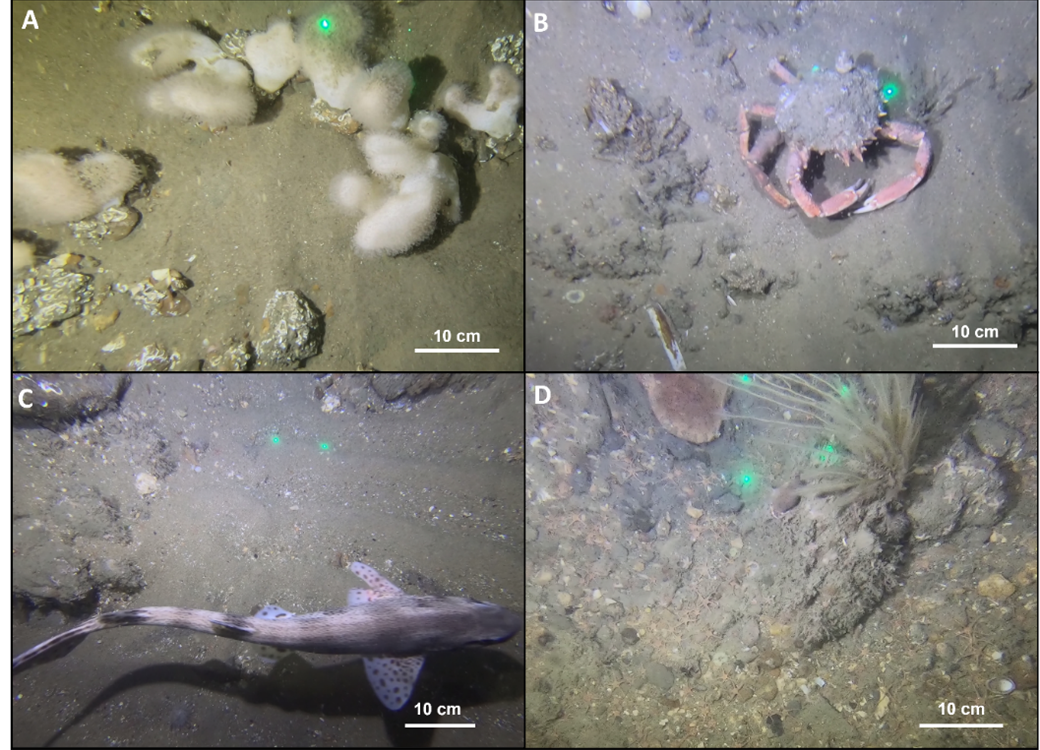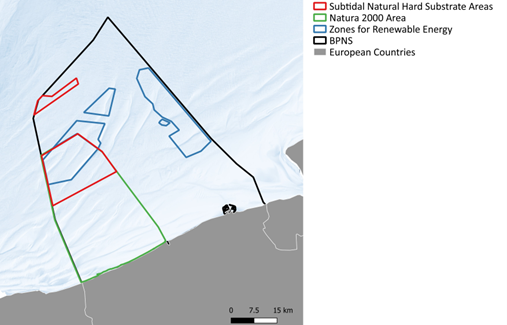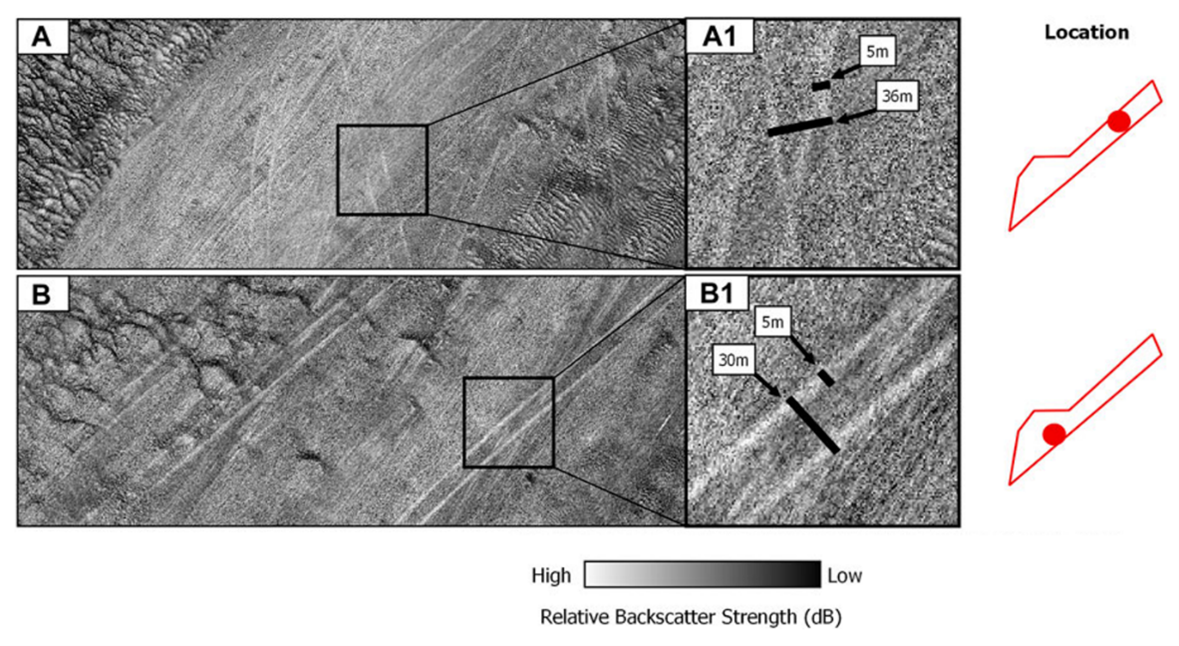Stony reefs in the Belgian North Sea host a unique fauna that is highly vulnerable to bottom-disturbing activities. Currently, these reefs are targeted by bottom-contacting fisheries. This paradox underpins the urgent need for a more effective protection of marine gravel beds and their fauna.

The Belgian seafloor consists primarily of soft sediments that form a widespread and very prominent geomorphological system of large sandbanks. However, approximately. 16% of the seafloor is composed of natural hard substrates, typically referred to as “stony reefs” or “gravel beds”. These stony reefs, ranging from gravels to pebbles, cobble stones and larger boulders, are patchily distributed over the predominantly sandy seafloor.
Stony reef areas provide a stable holdfast for a unique, diverse and specialized fauna. Several organisms, such as soft corals and branching hydrozoans or bryozoans, form complex three-dimensional body structures. These areas, characterized by increased habitat complexity and heterogeneity compared to the surrounding sandy environment, act as oases and serve as refuge, settling, foraging, spawning and nursery grounds for organisms at various levels of the food web. Many of these are of commercial and conservation importance (Fig. 1). These habitats are as ecologically valuable as they are fragile and they are highly susceptible to anthropogenic disturbances, including bottom-contacting fisheries.
Minimally invasive research
Gaining a deeper understanding of the effects of commercial bottom-disturbing fisheries on stony reefs in the Belgian North Sea was the goal of the investigation led by Giacomo Montereale Gavazzi and fellow researchers from the MARECO group (Marine Ecology and Management) of the Institute of Natural Sciences. Their results, spanning a period of 7 years (2016-2022), are presented in a 2023 publication in the scientific journal Frontiers in Environmental Science.
The study focused on two distinct offshore stony reef areas in the Belgian part of the North Sea: the Northwest and the Hinder Banks (Fig. 2). The Northwest site, first observed in 2018 and celebrated as a biodiversity hotspot, has been designated as a search zone for biodiversity protection, but also as a prospecting area for marine aggregate extraction under the Marine Spatial Plan 2020-2026 that is currently in force. The Hinder Banks site partly overlaps with the Marine Protected Area ‘Vlaamse Banken’ under the EU habitats Directive, which was delineated in 2012 to protect reefs and sandbanks.

Given the fragility of these habitats, the research team relied solely on minimally invasive remote sensing technologies. Commercial fishing activity data (mapping the spatial and temporal distribution of fisheries), echo sounding (seabed mapping with sound waves) and underwater photography (documenting the structure and fauna of the seabed) were combined to provide a comprehensive overview of the ecological status of the two areas. The data analysis confirmed that both were hotspots for bottom-contacting fisheries during the studied period.
Reefs as fishing hotspots
The Northwest site has experienced a boom in fishing activities from 2021 to 2022 (32% increase in the number of operating vessels), with an overall extent of the area disturbed reaching 86%. In the Hinder Banks area, the estimated disturbed area was calculated at 89%, and while fishing activities decreased by 60% from 2021 to 2022, this site has been chronically under very high fishing pressure going back for centuries.
This intense fishing pressure is reflected in the response of the stony reef benthic communities. These shifted from immobile, long-living and habitat-forming taxa with low resistance and recovery potential to disturbance (typical of such habitats) to opportunistic taxa lacking these typical characteristics. The effect that bottom-trawling has on the seafloor was also evident by the trawl marks captured by the hydroacoustic surveys (Fig. 3), appearing as plough marks scarring and smoothing the geomorphology, with their impact persisting for at least four months. The overall results showcase that bottom-contact fishing practices can have detrimental effects on the ecological functionality of these conservation priority biotopes.

Marine Spatial Planning
While both study sites are subject to different environmental management regimes, they share a common challenge with respect to ongoing direct anthropogenic disturbance. Considering that the Hinder Banks area is designated as a Marine Protected Area, it becomes evident that this legislative status alone is insufficient for achieving the desired protection level. More comprehensive regulations are in trajectory under the current Marine Spatial Plan. Both stony reef sites have been designated as search zones for seafloor protection with the intention of restricting bottom-disturbing fishing practices to facilitate nature restoration and conservation.
The study by Montereale Gavazzi and his colleagues provides additional scientific information to be considered for the next Marine Spatial Plan and as such supports the protection of local natural biodiversity. It strongly advocates for adequate regulation of bottom-disturbing fishing practices in stony reef areas and emphasizes the importance of translating the planned management measures into concrete reality.
Additional challenges
At the same time, other human activities compete for the same space, with the planned Princess Elisabeth Zone for offshore wind farms overlapping the Vlaamse Banken Marine Protected Area (Fig. 2) and marine aggregate extraction being prospected at the Northwest site. With respect to the Princess Elisabeth Zone, the EDEN2000 study “Exploring options for a nature-proof Development of offshore wind farms inside a Natura 2000 area”, also coordinated by the MARECO team between 2019 and 2023, provided the necessary knowledge for a nature-proof development of wind farms.
EDEN2000 was commissioned by former Minister for the North Sea Vincent Van Quickenborne and the Department for the Marine Environment of the Federal Public Service Health, Food Chain Safety and Environment. The results serve as advice in the framework of public procurement procedures for the construction of wind turbines under the responsibility of AD Energy of the FPS Economy.
Paul Van Tigchelt, Minister of the North Sea: “Our North Sea is home to more than 2,000 different species. At the same time it is very busy with numerous activities. Our seabed has suffered greatly from intensive fishing. To protect the integrity of the seabed, we have identified the most valuable zones based on scientific research and in consultation with the competent services and the sector, within which we have now proposed fishing measures. We must cherish and support the biodiversity in our North Sea. We must restore nature that has been lost or severely reduced. Such as the European flat oyster and the gravel beds. Belgium has strong ambitions regarding nature restoration and we want to get started on this as quickly as possible.”
